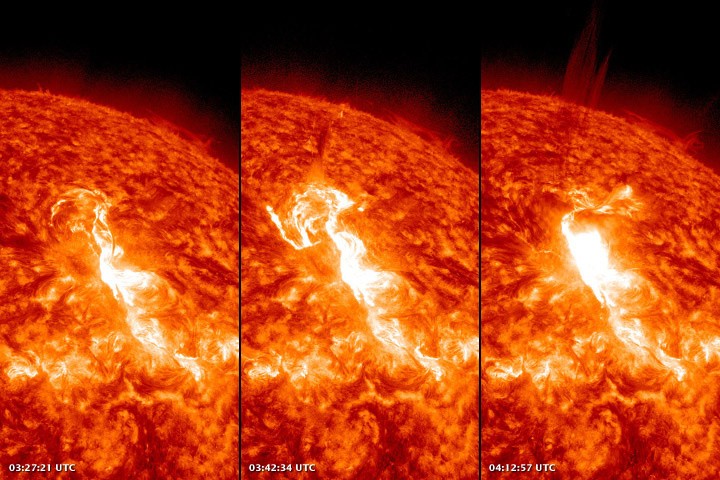
A solar storm on July 19 allowed some regions of North America to view the northern lights at lower latitudes than usual. A second, possibly G3 solar storm is now forecast to hit Earth on July 20.
The National Oceanic and Atmospheric Administration (NOAA) predicts that a G1 geomagnetic storm will develop between July 20 and 22 as a result of solar winds brought on by two recently discovered holes in the Sun's corona.
A G1 geomagnetic storm is brought on by solar winds colliding with the Earth's magnetic field. The storm may cause power grid fluctuations, halt satellite communications, and alter migratory animal behavior.
G3 Prediction
The solar storm scale, which goes from G1 to G5, rates it as the weakest type. But, as space weather expert Dr. Tamitha Skov noted in a tweet, it might prove to be more potent.
Skov tweeted that it would be difficult to predict the magnetic orientation of the Earth-directed solar storm. If this storm's magnetic field is oriented southward, G2-level or even G3 solar storm conditions could develop, Newsweek reports.
The long snake-like filament cartwheeled its way off the #Sun in a stunning ballet. The magnetic orientation of this Earth-directed #solarstorm is going to tough to predict. G2-level (possibly G3) conditions may occur if the magnetic field of this storm is oriented southward! pic.twitter.com/SNAZGMmqzi
— Dr. Tamitha Skov (@TamithaSkov) July 16, 2022
Solar Storm Basics
Other solar activity, such as coronal mass ejections (CMEs), takes place in the sun's active regions where the magnetic fields are especially powerful. CMEs, which are typically benign, can contain billions of tons of solar atmosphere material and have an embedded magnetic field. When the twisted magnetic field lines would suddenly reorient themselves, releasing them from the sun.
On July 15, a CME was seen, and some of its debris was what caused the aurora displays on July 19. Solar storms have at least one lovely side effect: the aurora displays that spread across the night sky during G1 storms. The displays are brought on when solar wind electrons strike the magnetosphere, which shields the planet from extraterrestrial charged particles.
High-velocity collisions between solar wind electrons and nitrogen and oxygen atoms and molecules occur between 50 and 300 miles above the Earth as the electrons speed toward the poles, where the field is weaker. The atmospheric atoms are excited to a higher energy state by the electrons' transfer of energy to them as they collide.
The blue and green lights visible in the skies are the result of the atoms releasing their excess energy as they fall back to lower energies. The northern lights may be visible at lower latitudes than usual during stronger geomagnetic storms because the electrons hit the atmosphere farther from the poles during these events.
This storm is predicted to be one of the stronger geomagnetic storms. Sebastian Voltmer, an astronomer, tweeted that this storm might produce powerful aurora displays and be visible further south than usual. The sun's activity fluctuates between decreasing and increasing levels toward each solar peak and occurs in 11-year cycles. The sun is anticipated to reach its peak activity levels in 2025 as the most recent solar minimum, which is defined as a time when the sun is least active, occurred in December 2019.
A #solarstorm is predicted to hit the Earth today/tomorrow that could disrupt GPS and radio signals.
— Dr. Sebastian Voltmer (@SeVoSpace) July 19, 2022
Strong #aurora shows possible with this one, deep into mid-latitudes.
😲 By chance, I saw exactly this #event through my small #telescope. Video & Music @SeVoSpace pic.twitter.com/wfPJtXHi80
© 2025 NatureWorldNews.com All rights reserved. Do not reproduce without permission.





